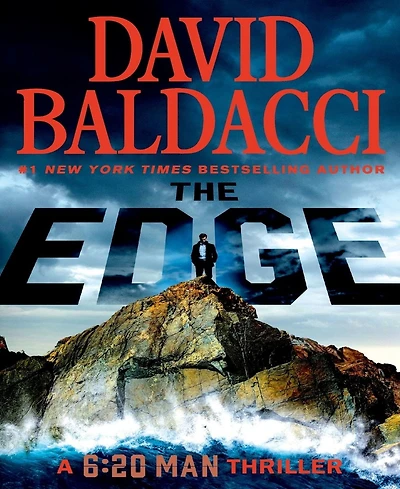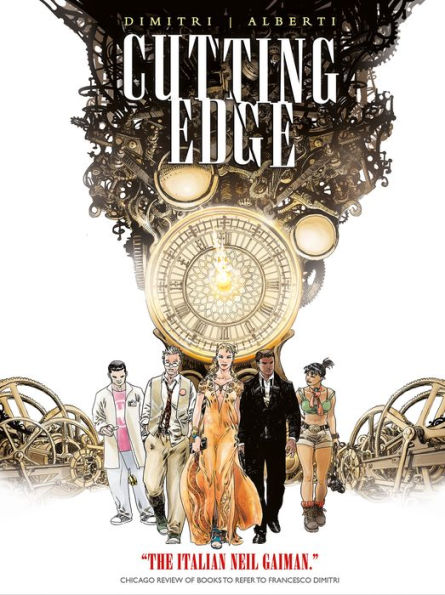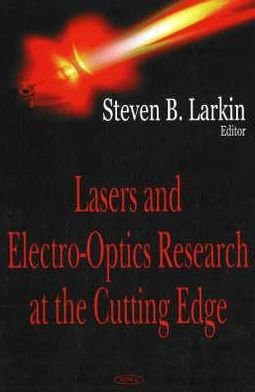Home
Cutting the Edge
Barnes and Noble
Loading Inventory...
Cutting the Edge in Bloomington, MN
Current price: $23.99


Cutting the Edge in Bloomington, MN
Current price: $23.99
Loading Inventory...
Size: OS
More than four years passed between
Press the Spacebar
and
Cutting the Edge
, but
Chicks on Speed
were more than busy during that time. Their label, gallery exhibits, and fashion shows seemed to take priority over a new album until
's double-album sprawl arrived, reaffirming that the group's music hadn't gotten lost among all those other projects. Though this is
's first album as a duo --
Kiki Moorse
left the band shortly after the release of
for a solo career -- not much else changed in their world; art, sex, dancing, and fashion are still their obsessions. The changes that are here are small but significant. Where the bandmembers used to diss six-strings so much that they wrote a song called
"We Don't Play Guitars,"
features
"How to Build a High-Heeled Shoe Guitar,"
a tutorial on transforming a stiletto into a musical instrument. This playful subversion is a welcome change from
, which often felt strident instead of impassioned.
includes the single
"Girl Monster,"
which appeared on the band's excellent anthology of female/queer artists of the same name; in a lot of ways, this album is like
's very own
Girl Monster
, where they can express virtually every side of their personality. They play with genres on
"Super Surfer Girl"
's polluted surf-pop and
"Vibrator"
's
B-52's
Flying Lizards
-loving new wave homage, nod to
Neubauten
on the mechanical rhythms of
"Sewing Machine,"
and set
"Globo Cop"
's visions of violence and megalithic corporations to a jittery, paranoid drone. Their fondness for playful social commentary continues with
"Art Rules,"
which like its predecessor,
"Fashion Rules,"
celebrates and skewers the art world; it might be an insular target, but with lines like "stir in a concept" and "your own exhibition at age 33!," its aim is dead-on.
delve deeper into what is real, what is fake, and what is art on
's second half, with mixed results. The clever
"Black and White Diva"
borrows from Weimar-era cabaret as it ponders image versus individual, but
"Coolhunters"
and the title track are more about questioning authority and authenticity than being musically interesting. That this is
's biggest and most eclectic album is a blessing and a curse: it's often as overwhelming as it is fascinating. Cutting
to its most potent tracks would make it more listenable, but that might be missing the point. Regardless, its best moments are just as smart as
have been since the beginning. ~ Heather Phares
Press the Spacebar
and
Cutting the Edge
, but
Chicks on Speed
were more than busy during that time. Their label, gallery exhibits, and fashion shows seemed to take priority over a new album until
's double-album sprawl arrived, reaffirming that the group's music hadn't gotten lost among all those other projects. Though this is
's first album as a duo --
Kiki Moorse
left the band shortly after the release of
for a solo career -- not much else changed in their world; art, sex, dancing, and fashion are still their obsessions. The changes that are here are small but significant. Where the bandmembers used to diss six-strings so much that they wrote a song called
"We Don't Play Guitars,"
features
"How to Build a High-Heeled Shoe Guitar,"
a tutorial on transforming a stiletto into a musical instrument. This playful subversion is a welcome change from
, which often felt strident instead of impassioned.
includes the single
"Girl Monster,"
which appeared on the band's excellent anthology of female/queer artists of the same name; in a lot of ways, this album is like
's very own
Girl Monster
, where they can express virtually every side of their personality. They play with genres on
"Super Surfer Girl"
's polluted surf-pop and
"Vibrator"
's
B-52's
Flying Lizards
-loving new wave homage, nod to
Neubauten
on the mechanical rhythms of
"Sewing Machine,"
and set
"Globo Cop"
's visions of violence and megalithic corporations to a jittery, paranoid drone. Their fondness for playful social commentary continues with
"Art Rules,"
which like its predecessor,
"Fashion Rules,"
celebrates and skewers the art world; it might be an insular target, but with lines like "stir in a concept" and "your own exhibition at age 33!," its aim is dead-on.
delve deeper into what is real, what is fake, and what is art on
's second half, with mixed results. The clever
"Black and White Diva"
borrows from Weimar-era cabaret as it ponders image versus individual, but
"Coolhunters"
and the title track are more about questioning authority and authenticity than being musically interesting. That this is
's biggest and most eclectic album is a blessing and a curse: it's often as overwhelming as it is fascinating. Cutting
to its most potent tracks would make it more listenable, but that might be missing the point. Regardless, its best moments are just as smart as
have been since the beginning. ~ Heather Phares
More than four years passed between
Press the Spacebar
and
Cutting the Edge
, but
Chicks on Speed
were more than busy during that time. Their label, gallery exhibits, and fashion shows seemed to take priority over a new album until
's double-album sprawl arrived, reaffirming that the group's music hadn't gotten lost among all those other projects. Though this is
's first album as a duo --
Kiki Moorse
left the band shortly after the release of
for a solo career -- not much else changed in their world; art, sex, dancing, and fashion are still their obsessions. The changes that are here are small but significant. Where the bandmembers used to diss six-strings so much that they wrote a song called
"We Don't Play Guitars,"
features
"How to Build a High-Heeled Shoe Guitar,"
a tutorial on transforming a stiletto into a musical instrument. This playful subversion is a welcome change from
, which often felt strident instead of impassioned.
includes the single
"Girl Monster,"
which appeared on the band's excellent anthology of female/queer artists of the same name; in a lot of ways, this album is like
's very own
Girl Monster
, where they can express virtually every side of their personality. They play with genres on
"Super Surfer Girl"
's polluted surf-pop and
"Vibrator"
's
B-52's
Flying Lizards
-loving new wave homage, nod to
Neubauten
on the mechanical rhythms of
"Sewing Machine,"
and set
"Globo Cop"
's visions of violence and megalithic corporations to a jittery, paranoid drone. Their fondness for playful social commentary continues with
"Art Rules,"
which like its predecessor,
"Fashion Rules,"
celebrates and skewers the art world; it might be an insular target, but with lines like "stir in a concept" and "your own exhibition at age 33!," its aim is dead-on.
delve deeper into what is real, what is fake, and what is art on
's second half, with mixed results. The clever
"Black and White Diva"
borrows from Weimar-era cabaret as it ponders image versus individual, but
"Coolhunters"
and the title track are more about questioning authority and authenticity than being musically interesting. That this is
's biggest and most eclectic album is a blessing and a curse: it's often as overwhelming as it is fascinating. Cutting
to its most potent tracks would make it more listenable, but that might be missing the point. Regardless, its best moments are just as smart as
have been since the beginning. ~ Heather Phares
Press the Spacebar
and
Cutting the Edge
, but
Chicks on Speed
were more than busy during that time. Their label, gallery exhibits, and fashion shows seemed to take priority over a new album until
's double-album sprawl arrived, reaffirming that the group's music hadn't gotten lost among all those other projects. Though this is
's first album as a duo --
Kiki Moorse
left the band shortly after the release of
for a solo career -- not much else changed in their world; art, sex, dancing, and fashion are still their obsessions. The changes that are here are small but significant. Where the bandmembers used to diss six-strings so much that they wrote a song called
"We Don't Play Guitars,"
features
"How to Build a High-Heeled Shoe Guitar,"
a tutorial on transforming a stiletto into a musical instrument. This playful subversion is a welcome change from
, which often felt strident instead of impassioned.
includes the single
"Girl Monster,"
which appeared on the band's excellent anthology of female/queer artists of the same name; in a lot of ways, this album is like
's very own
Girl Monster
, where they can express virtually every side of their personality. They play with genres on
"Super Surfer Girl"
's polluted surf-pop and
"Vibrator"
's
B-52's
Flying Lizards
-loving new wave homage, nod to
Neubauten
on the mechanical rhythms of
"Sewing Machine,"
and set
"Globo Cop"
's visions of violence and megalithic corporations to a jittery, paranoid drone. Their fondness for playful social commentary continues with
"Art Rules,"
which like its predecessor,
"Fashion Rules,"
celebrates and skewers the art world; it might be an insular target, but with lines like "stir in a concept" and "your own exhibition at age 33!," its aim is dead-on.
delve deeper into what is real, what is fake, and what is art on
's second half, with mixed results. The clever
"Black and White Diva"
borrows from Weimar-era cabaret as it ponders image versus individual, but
"Coolhunters"
and the title track are more about questioning authority and authenticity than being musically interesting. That this is
's biggest and most eclectic album is a blessing and a curse: it's often as overwhelming as it is fascinating. Cutting
to its most potent tracks would make it more listenable, but that might be missing the point. Regardless, its best moments are just as smart as
have been since the beginning. ~ Heather Phares



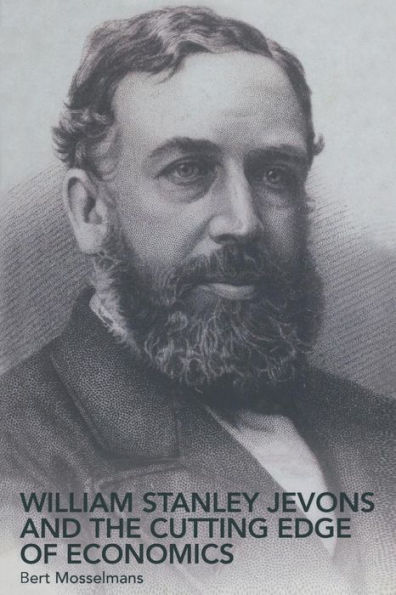
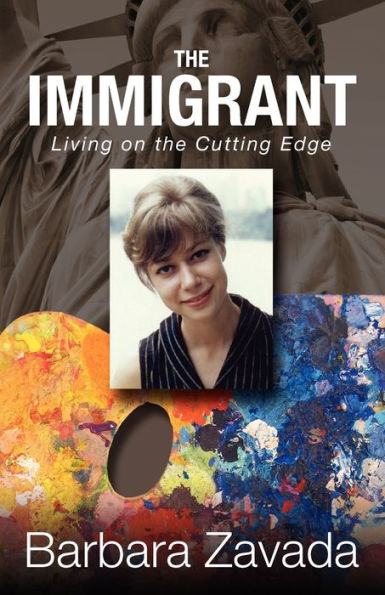
![The Cutting Edge [Gold Medal Edition]](https://prodimage.images-bn.com/pimages/0027616134202_p0_v3_s600x595.jpg)

